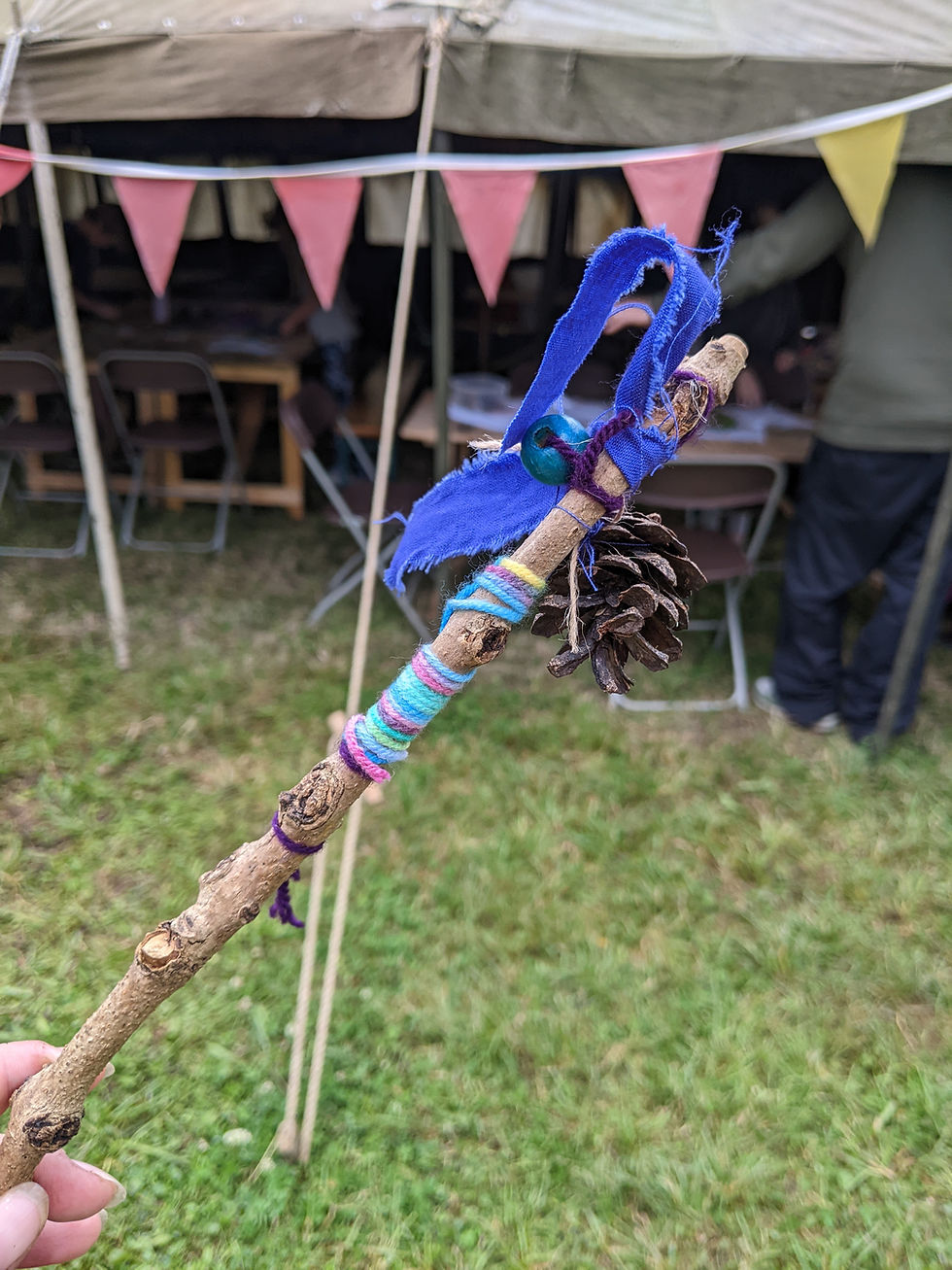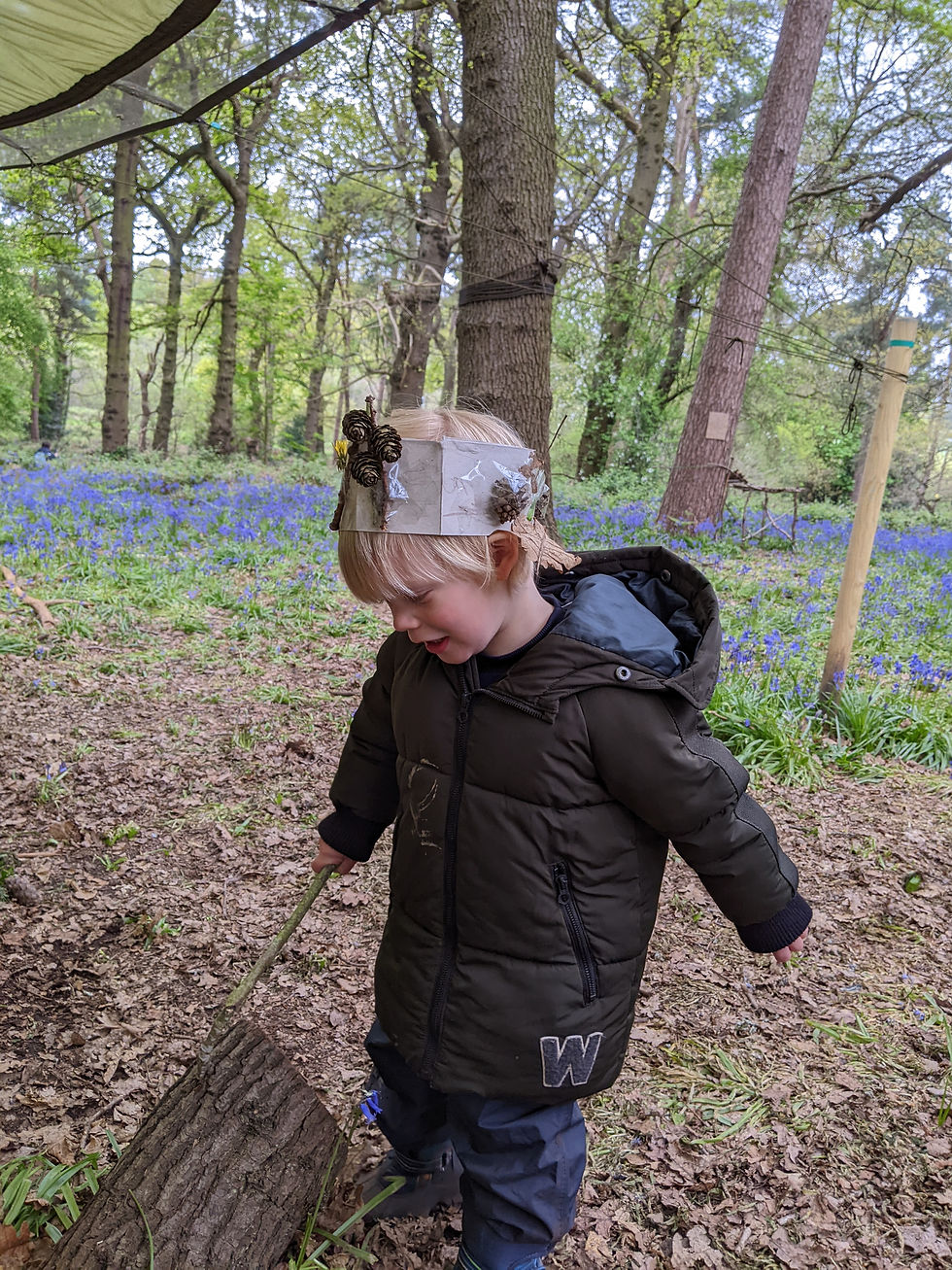How to be a Woodland Fairy with Nature Wands
- Nature Makers

- Aug 27, 2024
- 3 min read
Imagine stepping into a magical woodland realm where every twig, leaf, and flower holds the potential for enchantment. Today, we're going to explore how your little ones can transform into woodland fairies using nothing but their imagination and the natural treasures found in British forests and gardens.

The Magic of Nature Wands
At the heart of every woodland fairy's power is their nature wand. These aren't just ordinary sticks – they're magical tools crafted from the very essence of the forest. Here's how to create your own:
1. Wand Hunting: Take a stroll through a local woodland or your garden. Look for the perfect stick – it should be about as long as your child's forearm and sturdy enough not to snap easily.
2. Gathering Nature's Treasures: As you walk, collect small natural items like feathers, leaves, flowers, and berries. Remember to only take items that have already fallen to the ground to protect the local environment.
3. Crafting the Wand: Using some natural twine or colourful wool, help your child attach their collected treasures to the stick. Feathers can be tied to one end to create a magical flourish, while flowers and leaves can be woven along the length.
4. Adding Fairy Dust: For an extra sprinkle of magic, mix some biodegradable glitter with a bit of water and paint it onto parts of the wand. As it dries, it will shimmer like real fairy dust!

Becoming a Woodland Fairy
Now that your child has their nature wand, it's time to fully embrace the woodland fairy experience:
1. Dress the Part: Create simple fairy wings using cardboard and decorating them with leaves and flowers. A crown of daisies or a garland of ivy can complete the look.
2. Learn Fairy Speak: Encourage your child to come up with magical words for their spells. "Bippity boppity bloom" might make flowers grow, while "Whispering wind, dance with me" could start a gentle breeze.
3. Fairy Missions: Set your little fairy some magical tasks that help them learn about and care for nature:
"Sprinkle some fairy dust to help this seedling grow" (water a small plant)
"Cast a cleaning spell on this area" (pick up any litter safely)
"Use your wand to count how many different types of leaves you can find"
"Whisper a quiet spell to observe a bird or small animal without disturbing it"
"Wave your wand to create a cosy home for insects" (build a small bug hotel with twigs and leaves)
"Cast a rainbow spell to identify five different colours in nature"
4. Create a Fairy Garden: In a quiet corner of your garden or in a large pot, help your child create a miniature fairy garden using small plants, pebbles, and tiny decorations made from natural materials.
5. Fairy Tea Party: Host a magical tea party with your child and their fairy friends (real or imaginary). Use large leaves as plates and acorn caps as cups.

The Importance of Imaginative Nature Play
While all this fairy play is undoubtedly fun, it's also incredibly beneficial for your child's development. It encourages:
Creative thinking and problem-solving
A deeper connection with nature
Fine motor skills development through crafting
Language development as they create and tell magical stories
Physical activity as they explore the outdoors
Remember, the most important ingredient in becoming a woodland fairy is imagination. With a nature wand in hand and a spirit of wonder, every outdoor adventure can become a magical journey into an enchanted realm.
So, the next time you're out for a walk in the woods or playing in the garden, why not sprinkle a little fairy dust on your day? You might be surprised at the magic you discover!


%20(1).png)



Comments